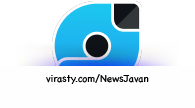Point ۱: This article discusses tow THE JURISPRUDENTIAL JUSTIFICATIONS OF NECESSITY OF AN IRANIAN MILITARY ATTACK ON ISRAEL, and the necessity of attacking Israel and its military aspects
Point ۲: In this approach, only the first step of the first curtain for Iran military invasion to Israel will be discussed and the complete explanation of ۲ curtains and ۸ steps will be published in the proper time
Point ۳: This approach is just the personal opinion of the author and there is no guarantee whether the government of Islamic republic of Iran will accept and apply it or not
Based on preemptive defense doctrine, Israel should get under heavy military strikes through first and final strikes. In the primary step of first scene, ground zero points of Israel should be annihilated by Iranian military attacks. To get this end, Iran can use long range missiles. The distance from Iranian eastern most point to western most point of Israel is about ۲۶۰۰ km. strategic targets deep inside Israeli soil are in the range of Iranian conventional missiles.
Some Israeli critical points which should be attacked
Israeli People Must be AnnihilatedIsrael is the only country in the world with a Jewish majority. According to the last census of "Israel Central Bureau of Statistics” this country has a population of ۷.۵ million including ۵.۷ million Jews. The other ethnicities in population structure are Muslims, Christians, Druzes and Samarians. The largest ethnic minorities are so called Israeli Arabs
Northern District (Mehoz HaTzafon). Population: ۱,۲۴۱,۹۰۰; District capital: Nazareth
Haifa District (Mehoz Heifa). Population: ۸۸۰,۷۰۰; District capital: Haifa
Central District (Mehoz HaMerkaz). Population: ۱,۷۷۰,۰۰۰; District capital: Ramla
Tel Aviv District (Mehoz Tel Aviv). Population: ۱,۲۲۷,۹۰۰; District capital: Tel Aviv
Jerusalem District (Mehoz Yerushalayim). Population: ۹۰۷,۳۰۰; District capital: Jerusalem
Southern District (Mehoz HaDarom). Population: ۱,۲۰۱,۲۰۰; District Capital: Beersheba
Residents of Tel Aviv, Jerusalem and Hifa can be targeted even by Shahb ۳. Population density in these three adjacent areas composes about ۶۰ % of Israeli population. Sejjil missiles can target power plants, sewage treatment facilities, energy resources, transportation and communation infrastructures; and in the second stage Shahab ۳ and Ghadr missiles can target urban settlements until final annihilation of Israel people
Destruction of Israeli Infrastructures
Destruction of Israeli infrastructure like railroad stations, airports and nuclear facilities by Sejjil missiles must be in order. In the past ten years Iran could perform this operation in depth of Israeli soil
Destruction of Israeli Nuclear Bases
"Rafael” nuclear plant is one of the oldest power plants in Israel. This power plant is the main nuclear engineering center of Israel. "Eilun” nuclear plant is the other Israeli reactor located in "Nebrin”. Residents of this village were forced to leave their homes in ۱۹۴۸. This plant is considered to be Israel’s tactical nuclear weapons arsenal. "Eriha” surface to surface mid and long-range missile, capable of delivering nuclear warheads, is stored in this facility. The range of this missile is ۵۰۰ up to ۱۴۰۰ km
According to Yedioth Ahronoth, Ron Ben Yashal, Israeli military affair analyst, said; "There is not any place in Israel which is out of Iranian missile range.” He added: "Although Israeli missile arsenal is quantitatively and qualitatively much more advanced but its stock which amount to ۱۰۰ thousands missiles are constantly within the range of Iranian missiles
Facilities like Dimona reactor in the nuclear research center in Neqeb are one of the targets. Dimona is the most critical nuclear reactor in Israel and consists of ۱۰ building and ۳۰۰۰ scientists and technicians. Israel’s plutonium plant is located there
Dimona produces ۹۰% enriched fuel for Israeli nuclear weapons and bombs. Besides, US-Israeli joint lab for testing cyber operations against Iranian nuclear facilities is based in this site
StuxNet was a computer warm that was tested in Dimona with the aim of disturbing and stopping activities in Iranian nuclear facilities. StuxNet was designed to penetrate in C&M computers based on Siemens technology. This warm was delivered in systems by a Russian technician and through memory storage tools, and then spread rapidly in nuclear facilities but was detected by Iranian cyber defense experts
According to the strategy announced by Obama two weeks ago, deploying ground forces like what happened in Iraq and Afghanistan is substituted by other strategies like cyber war. Therefore, targetin dimona should be of high priority in attacking Israel
Israel’s air bases
Destruction of Israel’s Air BasesThere are ۱۲ airports in Israel but just three of them are civil air ports and the rest are under control of IDF. Sedot Mikha Air Base contains Jericho ballistic missiles and is located in southwest of Tel Nof Air Base, where aircrafts equipped with nuclear weapons are nested. F-۱۶ jets are stationed in Roman Ari Base F15
Destruction of Israel’s surface vesselsDestruction of Israeli surface vessels and submarines can be done by
۱. Missile attacks in waters which are under influence of Islamic Republic
۲. Special operation forces in all over the world
۳. Variety of sea mines including subsurface and remotely controlled variants. These weapons can be deployed by Iranian vessels and submarines in Israeli offshore
Missiles that Can Destroy IsraelAfter years of imposed war, considering regional conditions, results of missile attacks to Israel and available technology, Iranian defense officials decided to base main part of defense and deterrence strategy on developing mid and long-range missiles. In this process, significant efforts were concentrated on precision, efficiency and variety of warheads
In this report, we will offer concise description of mid and long-range ballistic missiles that can target territories of this regional cancerous tumor i.e. Quds occupying regime
After testing Shahab ۳ missiles an late ۹۰th and announcing its specifications especially the range of ۱۳۰۰ km, enemy’s perception on Iranian missile capability changed and gradually cased concerns among the military officials and then Zionist politicians, as introducing newer, longer ranges and more precious variants of Shahab was a sign of accomplishing higher levels of missile technology and more dreadful missiles in the future 3
Shahab ۳ MissilesShahab ۳ was designed as a continuation to Shahab ۱ and ۲ missiles with some changes in designing different systems. There are many technical similarities between shahab ۲ and ۳, but the latter is mor sophisticated and enjoys new electronic technology and advanced computer guidance soft and hardware. The range of this missile is said to be ۱۳۰۰ km, which means that luonching from western parts of Iran it can target Palestinian occupied territories
Different variants of Shahab ۳ missiles were produced and introduced to military arsenals. Ranges and subsystems of new versions are promoted but they all use single stage liquid fuel engines and inertial guidance systems
Different types of warheads, especially cluster warheads, can be used in this missile. Length of this variant is about ۱۶.۵ meters up to ۱۷ meters and their range is up to ۲۸۰۰ km. considering that the least distance from western parts of Iran to farthest point in occupied territories is barely more than ۱۲۰۰ km, Shahab ۳ family is a serious threat against every enemy and aggressor
AshuraThis missile has been developed based on Shahab ۳ and is a liquid propellant long-range missile. Shape of warhead is similar to late versions of Shahab ۳ and has a reduced diameter in upper portions. The missile makes use of indigenous subsystems and the capability of carrying various types of warheads is a characteristic of this missile. Domestic resources have announced a range of ۳۵۰۰ km for this missile, though foreign experts’ estimates of its range are ۲۵% to ۵۰% greater. Due to similarities in dimensions between Ashura and Shahab ۳, it is feasible to use previous launch systems for this missile. Its range allows it to hit targets in the westernmost points in occupied Palestine from eastern Iran
GhadrThe Ghadr ۱ missile, introduced in mid ۲۰۰۰s, was produced as a sequel to development of Shahab liquid propellant long-range missiles and indeed is considered a member of Shahab family. This single stage missile has been reported to have a range of about ۲۰۰۰km and a shorter preparation time compared with previous versions is one of its characteristics. This gives the missile a greater response speed. Some variants of this missile equipped with cluster warhead have been introduced. The warheads are of detachable type. The F variant of Ghadr has a length of ۱۵.۸۶m and a range of about ۱۹۵۰ meters and enjoys an inertial guidance system
SejjilLike Ghadr and Ashura missiles, the Sejjil was introduced in the second half of the ۲۰۰۰s and some experts consider it Iran’s most prominent ballistic missile, as enemy experts acknowledge that Sejjil has not a foreign equivalent. Sejjil is Iran’s firs solid propellant ballistic missile and most probably Iranian missiles’ pioneer on its way to wipe Israel off the map (in case of unavoidable military action). This is realized because of its mobile launcher system with an ability to carry a ready-to-launch missile
Due to use of solid fuel, the missile would be prepared to launch within a few minutes and the launcher could move quickly afterwards. This decreases the probability of the preemptive destruction of missile before launching. Furthermore, due to Sejjil’s extremely high acceleration, the possibility of its detection in the early stages of launch would be very low and the enemy would literally have no chance to intercept the missile
Sejjil has been reported to have a range of ۲۰۰۰ km and until now two variants of Sejjil ۱ and Sejjil ۲ have been developed, which is an indication of the related industries’ efforts to improve it. The sejjil missile is a two-stage vehicle which upon depletion of firs stage fuel, the motor detaches and the second stage motor ignites. The detachment of the first stage decreases the weight of missile and help increase the range
Iran could destroy Israel in less than ۹ minutesSejjil belongs to the series of Iranian ballistic missiles which flies above atmosphere and after traveling its trajectory in such altitude enters the atmosphere and heads towards target at a velocity of Mach ۱۰ to ۱۲ (around ۳۴۰۰ to ۴۰۸۰ m/s), which makes it impossible for air defense systems to incept it. This remarks the country’s missile technology progress towards attaining achieving such an important achievement. Moreover, the combined solid fuel technology used in this missile provides desired propulsive characteristics as well as storing lifetime
The ۲۳,۶۲۳ kg Sejjil has a ۱۷.۷۵ m length, ۱.۲۵ m diameter, and a ۵۰۰ kg detachable warhead. The missile reaches its maximal range within ۸۳۵s (۱۳ min ۵۵s). The Sejjil’s targeting, navigation and guidance systems provide high accuracy and precision, which makes it operationally invaluable.
The aforementioned ballistic missiles guidance system is of propulsion vector control, which through blades at the rocket exhaust changes the exhaust gases direction and corrects the missile direction. This system does much better than flap based control systems and the optimization of this system and is one of the factors contributing to Iranian missiles precision.
Four advantages of Sejjil ۲ compared to Shahab ۳Chief of Center for Srategic Defense Research, Vice Admiral Ali Shamkhani, congratulating Islamic Republic’s triumph in achieving modern technologies in various fields including missiles, told Fars News Agency defense service that after the imposed war Iran specially concentrated on design and development of liquid and solid propellant surface to surface missiles and developed various generations of missiles
"Development of a missile defense capability began in late ۹۰s in two phases after establishing the Aerospace Agency in defense ministry and included liquid propellant missile force and solid propellant missile force,” Added Shamkhani, who has served as defense minister in the ۷th and ۸th administrations
He went on adding that "first we started our research and development in the field of liquid fuel which culminated in development of liquid propellant surface to surface missiles production line and Shahabs, Shahab specially, Ghadr and the others were developed in this phase 3
Stating that the second phase of missile development was initiated in order to boost country’s defense capability against certain enemies in the region, chief of center for strategic defense research told: These enemies speak the language of threat and predicate the survival and sustenance of their regimes upon use of this language; so is it possible for Iran to overlook the threatening rhetoric and hideous defamations expressed by leaders in Tel Aviv and Washington
Asserting that Iran aims to provide deterrence against threats from enemies, including Zionists, Vice Admiral Shamkhani went on to comment on western media propaganda that such Iranian defensive achievements are antagonistic stressing "Iran’s missile capability is a defensive shield against any kind of plausible foreign aggression and is never deemed a threat to states in the region and across the world
Why it is not possible to use anti-missile systems against IranStressing that an intelligent and knowledgeable military man would act cautiously, chief of center for strategic defense research asserted "Iran possesses a huge geographic depth and this implies that Iran has surpassed its capability beyond certain objectives and this capability diminishes the chance and possibility of any anti-missile action or capability and countering the Islamic Republic’s missiles
"The project for development of Sejjil ۲, which was successfully fire-tested recently, started in ۹۰s under the name Project Ashura. This missile is completely based on native scientific knowledge, which indicates domestic experts’ self-sufficiency in upgrading and boosting the country’s defense capability,” added vise admiral Shamkhani
Regarding differences and advantages of Sejjil ۲ compared with Shahab ۳ ballistic missile he observed "Sejjil ۲ uses solid fuel – an advanced generation of missile propellants. Moreover, the missile has a greater velocity and precision and possesses a unique function in terms of navigation system compared with other Iranian surface to surface missiles
"Liquid propellant missiles take longer to be prepared due to the time needed for charging the fuel before launch. In this case there is a possibility that missile be detected before launch. To tackle this problem, underground silos have been constructed in different sites in the country to contain charged and ready-to-fire missiles for monthes
Given the great number of these silos, once the eviction time for each missile comes, there would still be a huge number of missiles in other silos which are ready to fire. Thus, the liquid propellant missiles could also be used in primary response to enemy action
All of the before-mentioned ballistic missiles have been improved in terms of guidance systems and reduction in radar reflection and are ready to fire to enemy. Regarding the number of missiles, foreign experts acknowledge that Iran could fire tens of missiles per day toward Israel and sustain the attack for several months. Looking to the psychological effects of striking Israel by some Iraqi imprecise missiles, and addition of high precision and destruction power of Iranian missiles, the enormous impact of Shahabs and Sejjils to the body of Qods occupying regime can be deemed conclusive





















